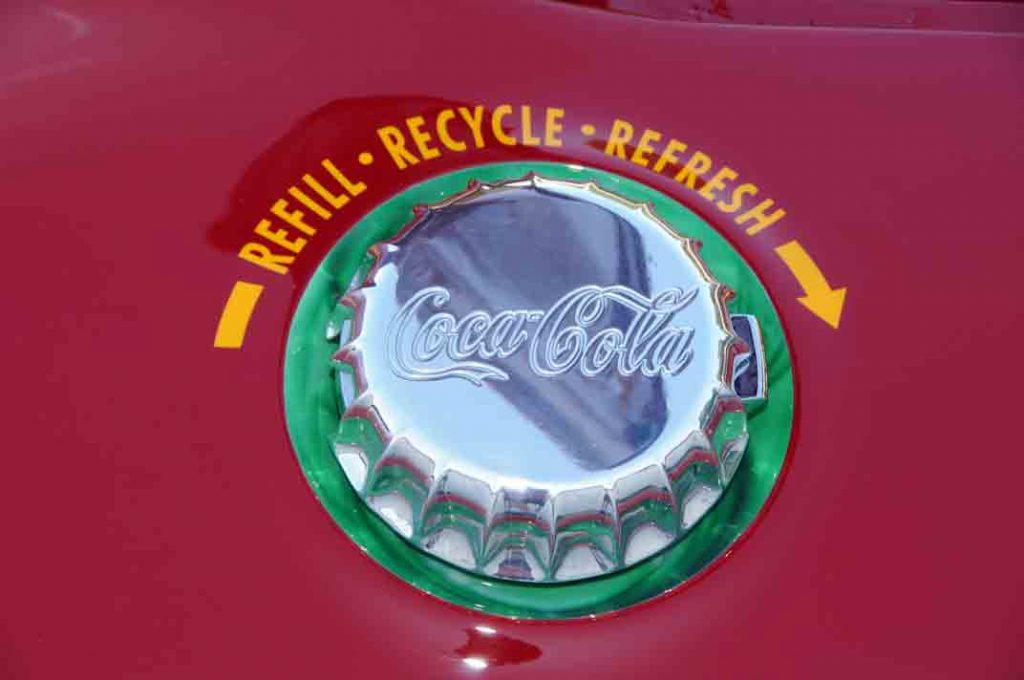Coke Machine
The second generation Chargers were defined by their Coke-bottle shape. But the Coke Car actually sounds as realistic as it looks.
By Cliff Gromer Photos by Cliff Gromer and Todd Dziadosz
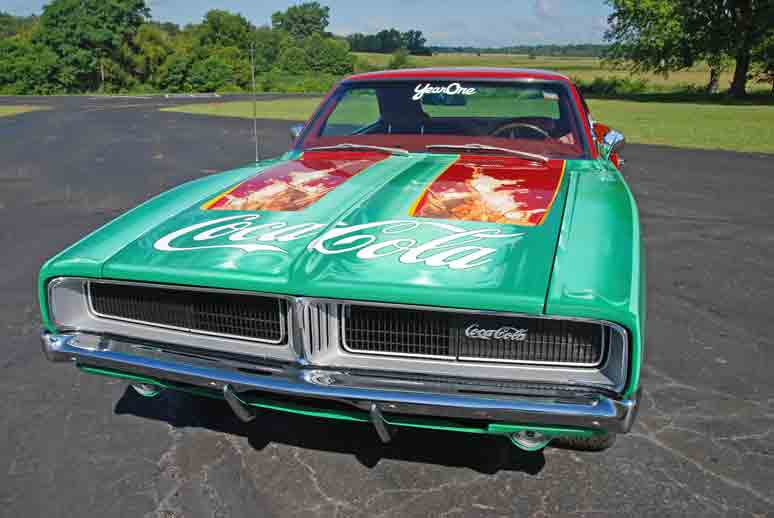
1969 Charger is restored to mostly stock mechanical condition. Only the name has been changed to protect the innocent
The â69 Charger in Steveâs Stanleyâs garage had been there since 1982, when he found it for sale by the side of the road. Steve had taken a detour on Old Route 66 between Leesburg and Ocala, FL, because his wife had threatened to kill him if he did not stop at a place to eat. The Charger had caught his eye as he drove by an old Gulf station that had been converted into a vintage car lot. Now his wife wanted it out. She was tired of scraping the morning ice off her windshield, while the Dodge languished inside its protected chamber
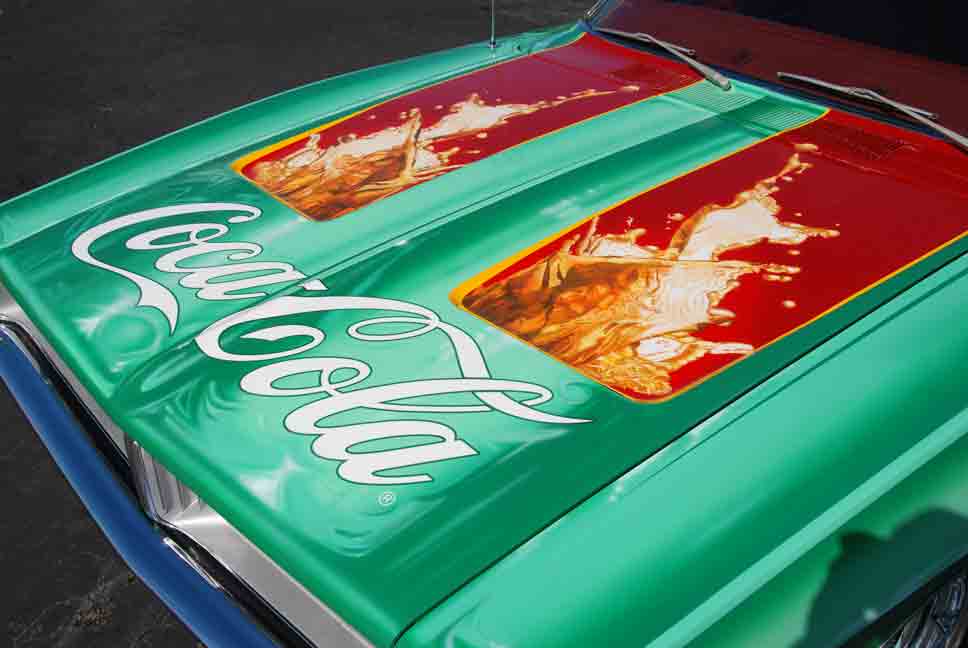
Steve Stanleyâs masterful airbrush job makes metal look as close as you can get to green Coke glass. He says the graphics on the hood are Coke flames, or simulated geysers of Coke syrup boiling out of the engine compartment. OK, we guess, but kind of icky.
Steve didnât have an answer about what to do with his car, so he took a break from his work as a freelance commercial artist (he had a home studio), lay down on his bed and gazed at the ceiling. And he called on someone who did have all the answersâGod.
Steve recalled his first ride in a Charger when he was a kid. It was on a back road in East Knoxville, Tennessee, and he remembered looking at the speedometer and seeing the needle bouncing between 140 and 150 miles per hour. He remembered a triple red Charger SE that was for sale when he was in high school. He didnât have enough in the bank to by it, and his desperate pleas to his parents for the extra cash fell on deaf ears.
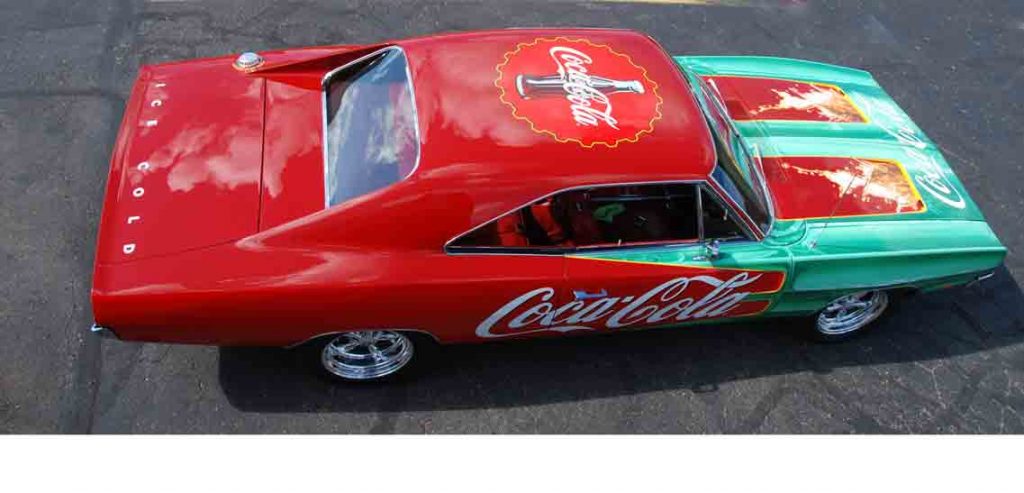
Roof shows a traditional Coke cap thatâs flattened and made to look like a gear. Decklid bears and âIce Coldâ that would have appeared on a vintage mom and pop store cooler.
Still daydreaming, Steve heard the words âCoke bottle car.â It was a phrase used a long time back by one of his friends who was working on his own Charger. The guy showed him the bottle line contours of the Dodge. And then, Steve had a vision. The ceiling fan, all of a sudden, didnât have five white blades, but five Coke bottles arranged like a wheel. It was his answer. The Coke Car!
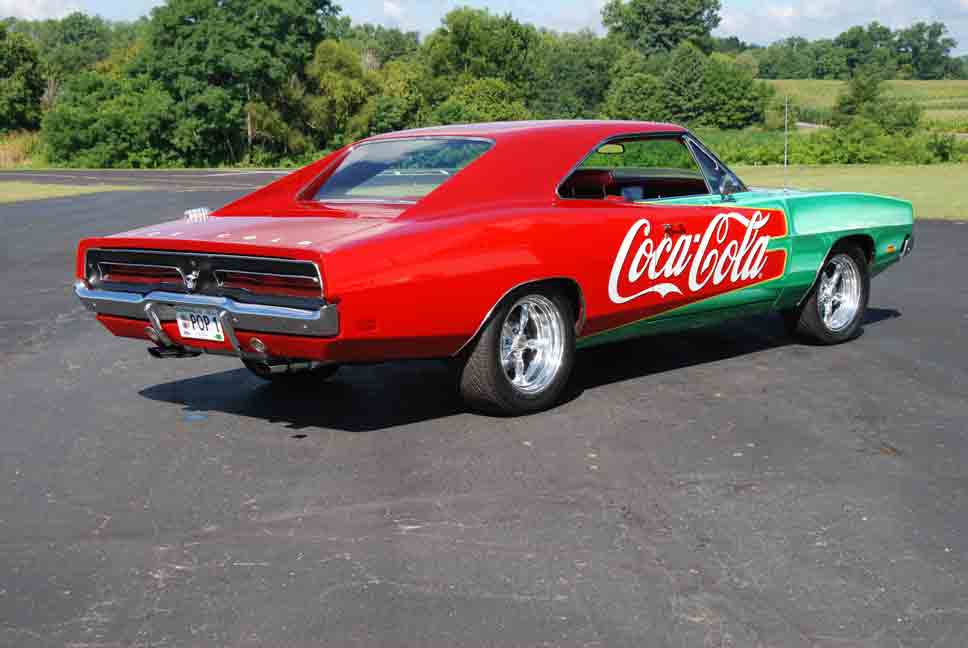
Steve did tons of research to make the graphics as authentic as possible. There are two reds on the carâa 1940âs Coke vending machine red and the contemporary Coke red. AMD supplied sheetmetal, glass and bumpers for the restoration.
The ideas poured out of his head, and Steve could hardly sketch fast enough to keep up with them. An hour later, he had the Coke Car on paper. What now? Obviously, try and pitch the concept to the Coke company. Easier said than done. Living in Georgia, the home state of Coca-Cola, Steve had freelanced for Coke, and had made some contacts. But his marketing contact turned out to be the person in charge of the caramel color for Coke. Dead end, and another request for divine intervention.
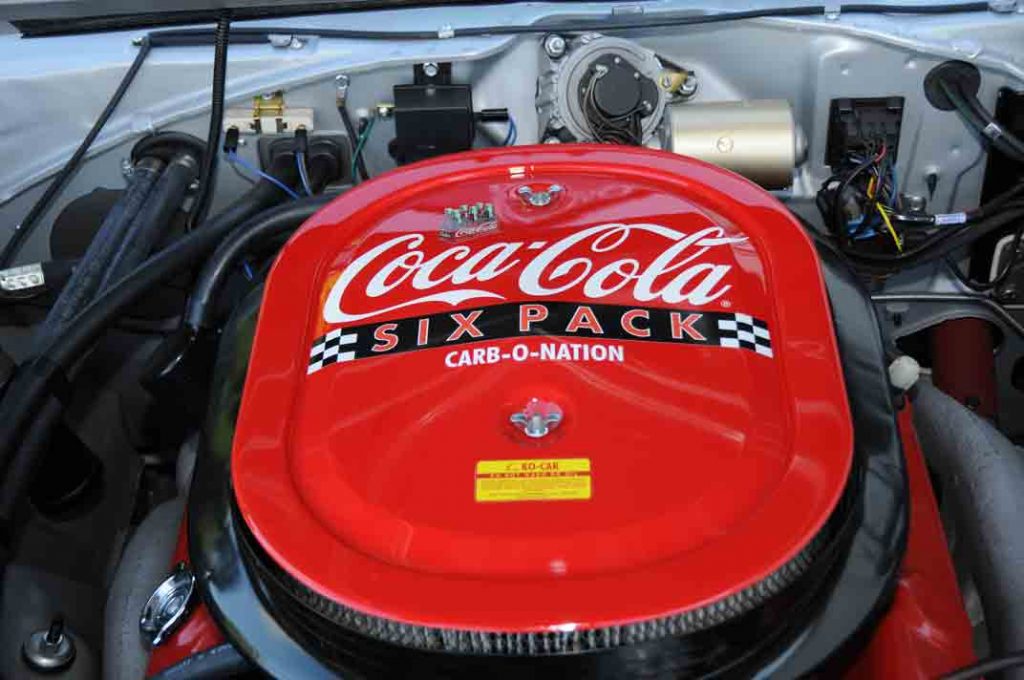
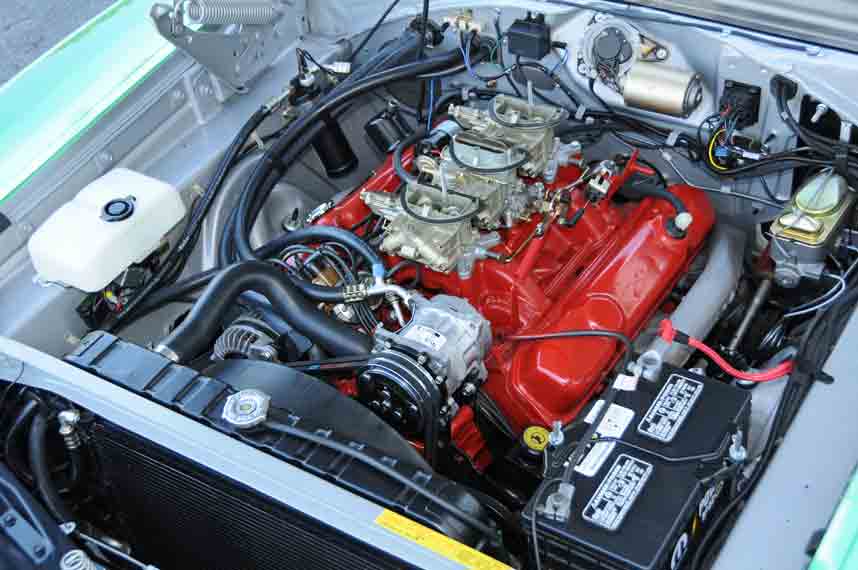
A Coke car isnât a Coke car without a 6-pack under the hood. Steve redid all the labels to reflect a Coke theme. The interior was sprayed in Sikkens silver, to mimic the same sterile aluminum appearance of the inside of a vintage Vend-O machine.
Steve was a member of a small (3 men) bible study group at his local church. The study leader asked the group to bring in a new member. But that seemed kind of hard to do these days. One day, however, a new guy did show upâKeith Wilmot, who had just moved down to GA from NJ. Steve got to talking with him, and asked what kind of work he did. âIâm the senior global director for ideation (ideas and imagination) and marketing.â Thatâs cool, Steve replied, who do you work for? âCoca-Cola.â
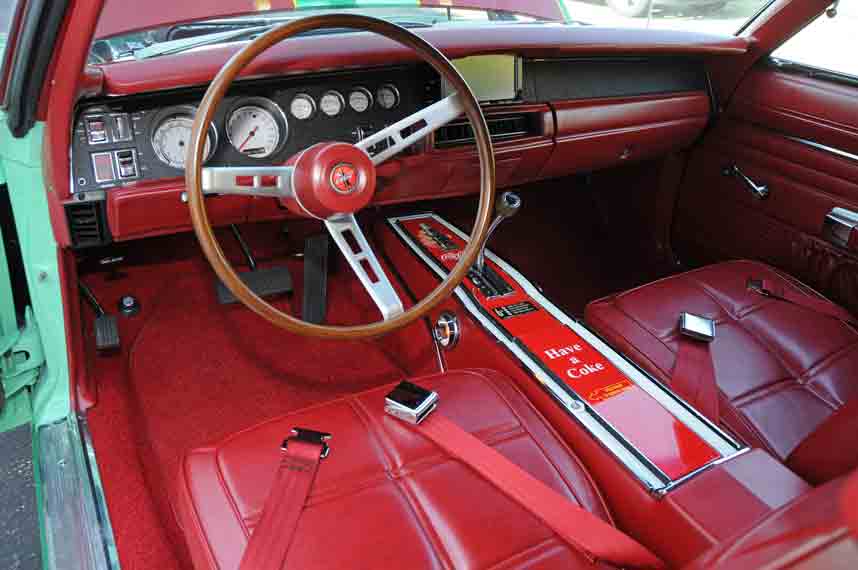
Interior is basically stock except for white face gauges, Coke horn button, and the console thatâs meticulously painted to resemble a vintage Coke vending machine.
As it turned out, Steve picked up some freelance work from Keith, but didnât mention the Coke Car. He decided to go ahead and build it on his own, along with a financial partner, Dave Levy, and they would try to sell the finished project. The restoration was handled by Trey Bogan and his brother Shannon (BoganRestoration.com), and Vic Calvert. Auto Metal Direct liked the concept, and supplied sheetmetal, glass, and bumpers.
After Trey smoothed the body seamlessly, he laid down the base colors of pale green and vintage Coke red. Steve would pick a color and Trey would formulate the various green tones for Steve to airbrush. This took hours, because Steve was insistent on matching the colors of his artwork. Steve had spent hours researching Coke glass and photographing Coke bottles in natural light, at differing times of the day. He wanted to find the most convincing shades of green. Coke green enamels can lean to the turquoise side, which is evident on some of the old Coke signage. They went with Sikkens paint.
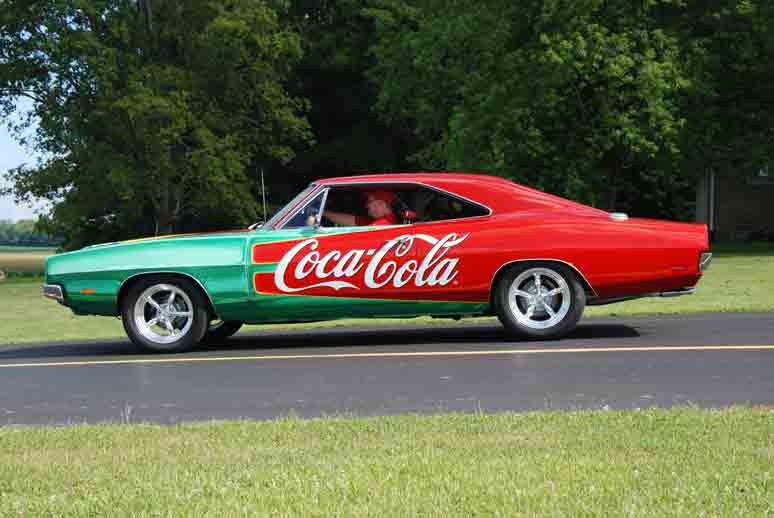
Steve lay on the floor on his back, his side, and in every position short of standing on his head to shoot his amazing airbrush art. And thatâs a real trick when the car is moving.
Â
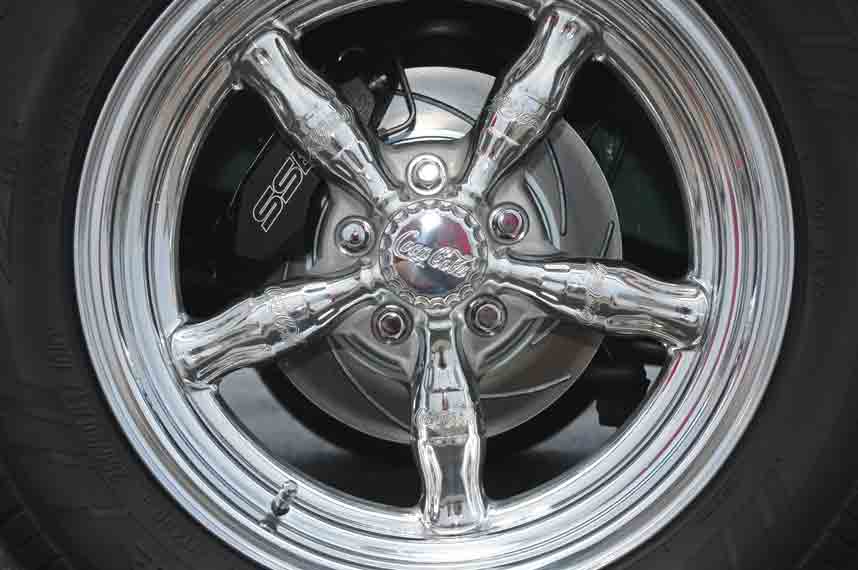
Custom wheel is a result of Steveâs divine halluâŠer, vision. Note Stainless Steel Brakes package.
The team debuted the completed car to Keith Wilmot, inside an old warehouse. Steve made a 20-minute presentation, which included previous Coke-themed vehicles, to show that consciously, or subconsciously, Coke always wanted to take one of their bottles, lay it on its side, add wheels and take it for a ride. He also demonstrated the Charger-bottle connection. Keith was speechless and was totally blown away by a rather unique feature of the car. Itâs sound effects.
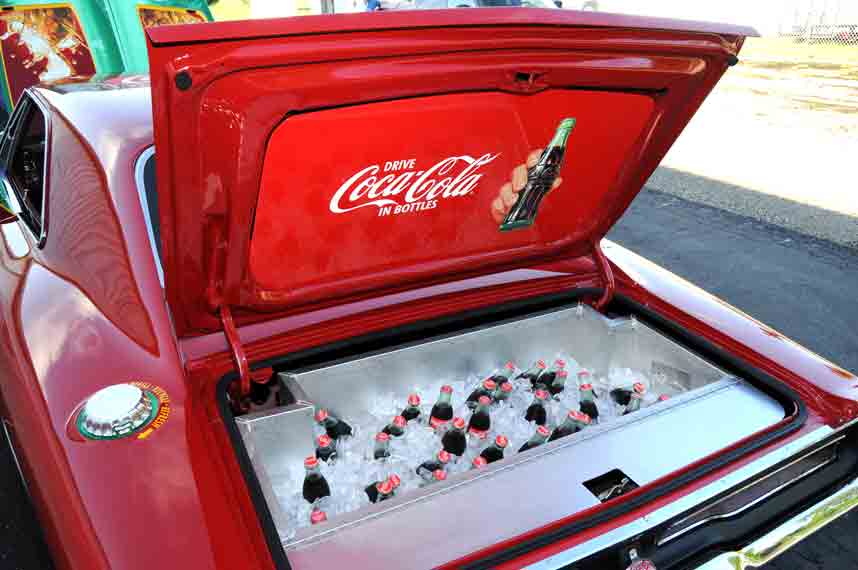
Hey, grab a cold one. As a matter of fact, grab 200 cold ones. Forget fitted luggage. A fitted aluminum cooler is the way to go.
Â
Releasing the hood generates a Pfffsst! sound, like youâre popping a top. Lift the hood, and there is a fizzy pouring sound. Close the hood, and youâre treated to a Glug! Glurg! drinking sound, a satisfying Ahhhh! and a real healthy Uhhrrrp! burp. All sounds were obtained from the Coke Museum, digitally downloaded into a sound machine, and played through a speaker located under the hood near the headlights. Even so, Keith was not the right guy to hand over a Coke company check for the car. Seems Steve still has to up the ladder, or in this case, the elevator, to the 14th floor in the Coke corporate offices. âCourse, the higher you go the more difficult it becomes to get an audience. Steveâs next stop is a guy named Ben Riley, whoâs in charge of the NASCAR-Coke connectionâan obvious tie-in, considering the Chargerâs NASCAR heritage. Itâs sure a better shot than someone whoâs in charge of Cokeâs caramel color.
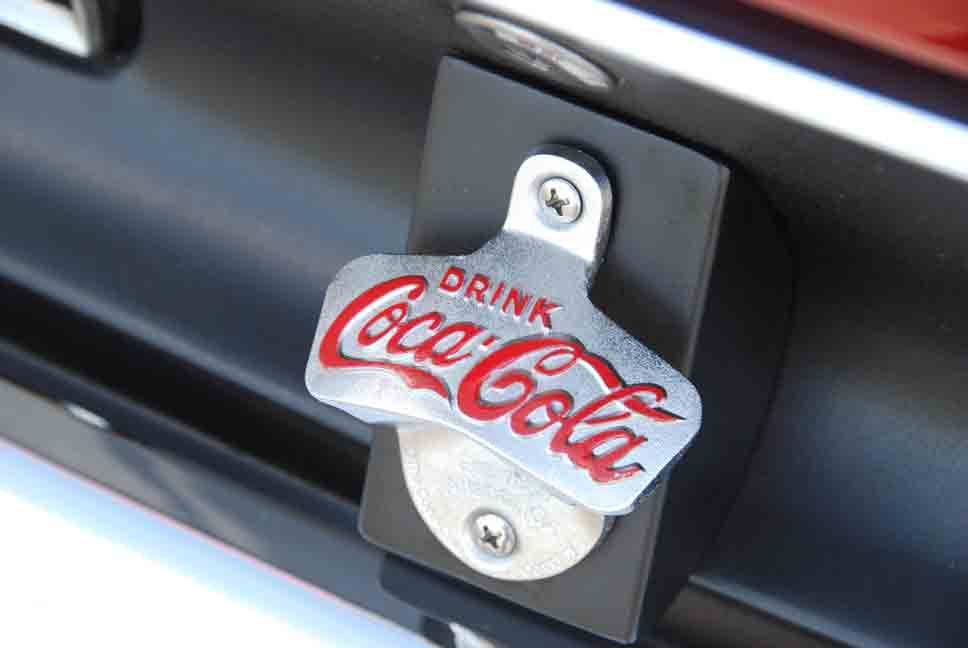
No need to use the edge of the bumper to snap the tops off bottles, and risk scratching the custom paint, because Dave thoughtfully supplied a convenient opener over the trunk lock. Moâfans get free Cokes whenever the car is displayed. Chevy fans get Pepsi (ugh!)
Â
Steve Stanley and Dave Levyâs â69 Charger recreates as accurately as possible, vintage elements of Coke memorabilia. But it misses the mark in one area: the stuff in the bottles iced inside the trunk cooler. âSecret formulaâ notwithstanding, Moâfans old enough to remember, know the watered down âClassicâof today is a far cry from the Coca-Cola they enjoyed as a kid. That Coke came in small bottles and burned all the way down. Maybe the execs on the 14th floor have their own stash.
